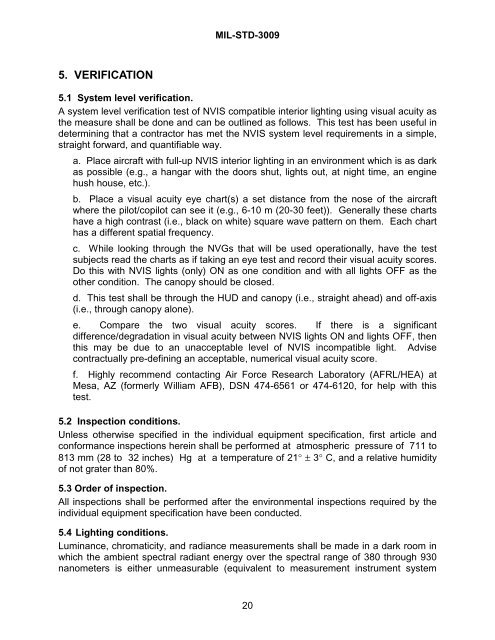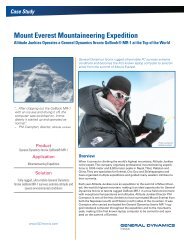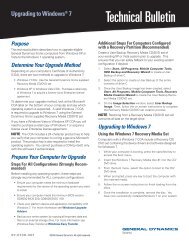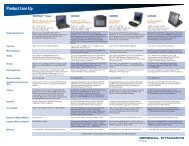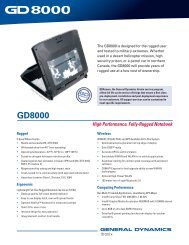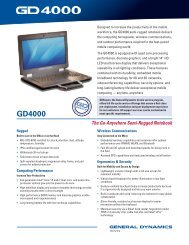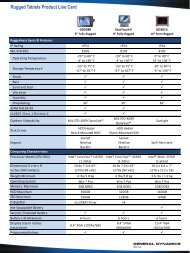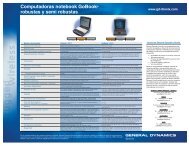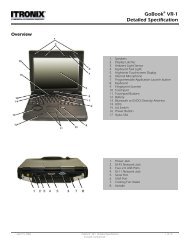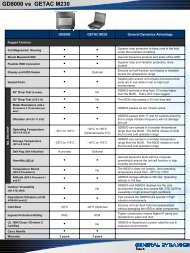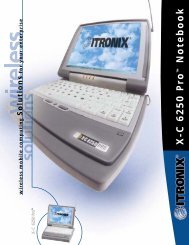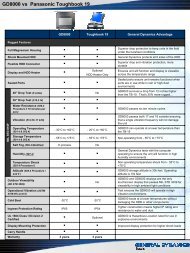lighting, aircraft, night vision imaging system - General Dynamics ...
lighting, aircraft, night vision imaging system - General Dynamics ...
lighting, aircraft, night vision imaging system - General Dynamics ...
You also want an ePaper? Increase the reach of your titles
YUMPU automatically turns print PDFs into web optimized ePapers that Google loves.
5. VERIFICATION<br />
MIL-STD-3009<br />
5.1 System level verification.<br />
A <strong>system</strong> level verification test of NVIS compatible interior <strong>lighting</strong> using visual acuity as<br />
the measure shall be done and can be outlined as follows. This test has been useful in<br />
determining that a contractor has met the NVIS <strong>system</strong> level requirements in a simple,<br />
straight forward, and quantifiable way.<br />
a. Place <strong>aircraft</strong> with full-up NVIS interior <strong>lighting</strong> in an environment which is as dark<br />
as possible (e.g., a hangar with the doors shut, lights out, at <strong>night</strong> time, an engine<br />
hush house, etc.).<br />
b. Place a visual acuity eye chart(s) a set distance from the nose of the <strong>aircraft</strong><br />
where the pilot/copilot can see it (e.g., 6-10 m (20-30 feet)). <strong>General</strong>ly these charts<br />
have a high contrast (i.e., black on white) square wave pattern on them. Each chart<br />
has a different spatial frequency.<br />
c. While looking through the NVGs that will be used operationally, have the test<br />
subjects read the charts as if taking an eye test and record their visual acuity scores.<br />
Do this with NVIS lights (only) ON as one condition and with all lights OFF as the<br />
other condition. The canopy should be closed.<br />
d. This test shall be through the HUD and canopy (i.e., straight ahead) and off-axis<br />
(i.e., through canopy alone).<br />
e. Compare the two visual acuity scores. If there is a significant<br />
difference/degradation in visual acuity between NVIS lights ON and lights OFF, then<br />
this may be due to an unacceptable level of NVIS incompatible light. Advise<br />
contractually pre-defining an acceptable, numerical visual acuity score.<br />
f. Highly recommend contacting Air Force Research Laboratory (AFRL/HEA) at<br />
Mesa, AZ (formerly William AFB), DSN 474-6561 or 474-6120, for help with this<br />
test.<br />
5.2 Inspection conditions.<br />
Unless otherwise specified in the individual equipment specification, first article and<br />
conformance inspections herein shall be performed at atmospheric pressure of 711 to<br />
813 mm (28 to 32 inches) Hg at a temperature of 21° ± 3° C, and a relative humidity<br />
of not grater than 80%.<br />
5.3 Order of inspection.<br />
All inspections shall be performed after the environmental inspections required by the<br />
individual equipment specification have been conducted.<br />
5.4 Lighting conditions.<br />
Luminance, chromaticity, and radiance measurements shall be made in a dark room in<br />
which the ambient spectral radiant energy over the spectral range of 380 through 930<br />
nanometers is either unmeasurable (equivalent to measurement instrument <strong>system</strong><br />
20


